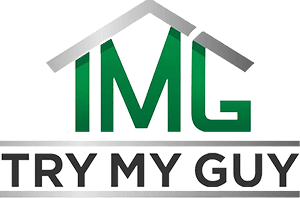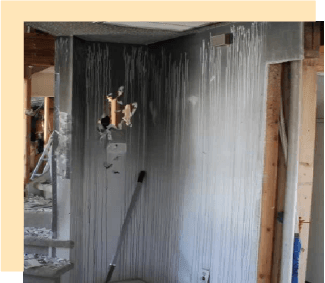
Mold Mitigation
The key to mold control is moisture control. It is important to properly dry water-damaged areas and items within 24-48 hours to prevent mold growth. Impact Disaster Services takes the necessary precautions to prevent mold growth after restoring water-damaged property.
In some cases, mold growth is discovered long after it's had a chance to spread. This is an easy, and unfortunate, circumstance, as mold can grow on virtually any organic material, as long as moisture and oxygen are present.
Molds gradually destroy the things they grow on, and left unchecked, mold can cause serious structural damage. More importantly, in addition to property damage, the presence of mold poses serious health risks. Inhalation exposure to mold indoors can cause headaches, allergic reactions, asthma attacks, hypersensitivity pneumonitis, and serious negative long-term health effects. Inhaling, ingesting, or even contacting the toxic byproducts of mold (mycotoxins) can lead to even graver health concerns. It is vitally important to contact an experienced professional when mold is discovered, and we fills that role.
Our experience, training, and state-of-the-art equipment allow us to remediate virtually any mold contamination.
Signs of Mold
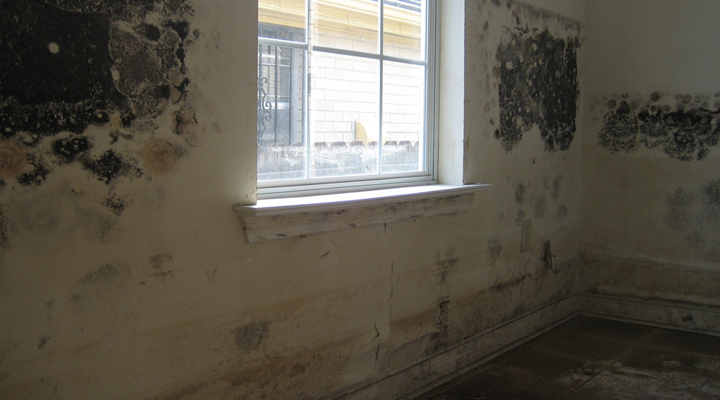
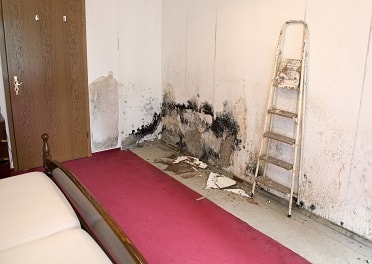
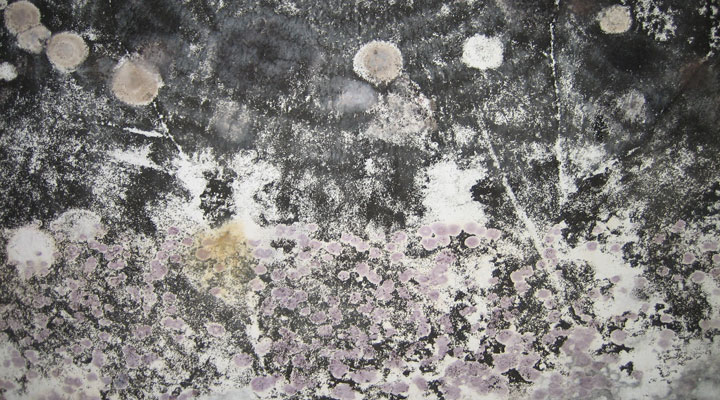
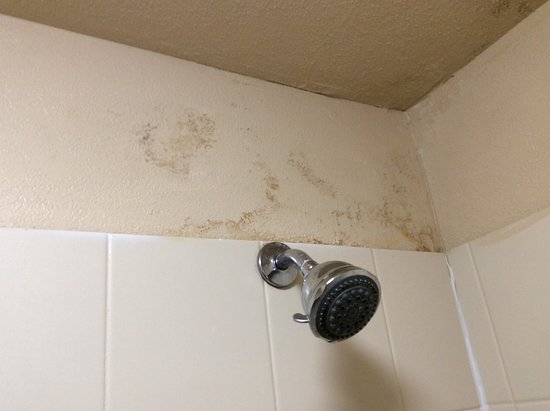
Ten Things You Should Know About Mold
Potential health effects and symptoms associated with mold exposures include allergic reactions, asthma, and other respiratory complaints.
There is no practical way to eliminate all mold and mold spores in the indoor environment; the way to control indoor mold growth is to control moisture.
If mold is a problem in your home or business, you must clean up the mold and eliminate sources of moisture.
Fix the source of the water problem or leak to prevent mold growth.
Reduce indoor humidity (to 30-60%) to decrease mold growth by: venting bathrooms, dryers, and other moisture-generating sources to the outside; using air conditioners and de-humidifiers; increasing ventilation; and using exhaust fans whenever cooking, dishwashing, and cleaning.
Clean and dry any damp or wet building materials and furnishings within 24-48 hours to prevent mold growth.
Contact a professional to remediate the mold and thoroughly dry the area. Absorbent materials such as ceilings, walls, and other structure that are moldy may need to be replaced.
Prevent condensation: Reduce the potential for condensation on cold surfaces (i.e., windows, piping, exterior walls, roof, or floors) by adding insulation.
In areas where there is a perpetual moisture problem, do not install carpeting (i.e., by drinking fountains, by sinks, or on concrete floors with leaks or frequent condensation).
Molds can be found almost anywhere; they can grow on virtually any substance, providing moisture is present. There are molds that can grow on wood, paper, carpet, and foods.
What is Mold?
Mold is a generic name for over 200,000 different kinds of fungus. Essentially, molds are living organisms (plants) that make spores instead of seeds which float in the air like pollen. Spores are regenerative cells surrounded by a very tough coating that can survive detergents, chemicals, bleach and extreme temperatures.
Mold spores are microscopic in size, typically requiring 600X magnification to identify. It is has been said that 250,000 mold spores can fit on the head of a pin. A visible patch of mold the size of a quarter can represent billions of spores.
Molds reproduce by releasing spores. When mold spores colonize (settle) on a surface they can grow and spread rapidly, giving off a variety of odors and exhibiting hundreds of different colors and textures.
Isn't Mold Everywhere?
Mold is part of the natural environment and is virtually everywhere, all the time, indoors and out. It would be a grievous mistake, however, to assume that just because mold is everywhere, it's not a problem.
Outdoors, mold plays an important role in nature by breaking down dead organic matter such as fallen leaves and dead trees. Indoors, mold can be a significant problem, destroying property and posing a number of serious health risks.
How Does Mold Become A Problem?
Since mold spores are everywhere all the time, we are always exposed to mold. At any given time, outdoor air will have as many as 100 different types of mold spores floating about, along with a number of other airborne pollutants. Because mold spores are ever-present in the air, they drift freely in and out of buildings th3ough doors, windows, attic vents, HVAC systems, etc. On any given day, airborne mold spore levels indoors should always be about the same as outdoors, unless mold is originating indoors.
Increased Spore Amounts
When airborne mold spores find something damp to stick to, they colonize (grow) and release new spores. Mold growing outdoors is seldom ever a health risk. But when mold grows indoors, spore levels can reach concentrations significantly higher than outdoors and cause a number of adverse reactions in people and animals, including rashes and itching skin, eye - nose and throat irritations, chronic headaches, respiratory infections, nausea, and trigger asthma attacks.
Increased Spore Types
In addition to increasing the amount of spores indoors, mold growing indoors on wet construction materials tend to produce different types of spores that are not found outdoors.
For example, it is rare to find Stachybotrys outdoors. But Stachybrotrys is often found growing indoors on wet drywall and carpet. Stachybrotrys is often referred to as "black mold" and can be toxigenic. Exposure to high concentrations of toxigenic mold spores inside a building can present a wide range of very serious health risks to the occupants.
While you cannot control Mother Nature, you can certainly limit the potential for indoor mold growth by limiting moisture sources and responding rapidly to every water intrusion issue. The biggest mistake people make is ignoring minor issues until they become major problems. Early detection and assessment can minimize the risk of exposure to toxic molds and save thousands of dollars in repair costs.
Is All Mold Bad?
To answer that question you must first understand that mold has two faces;
* There's the face you can visually see (mold growing on a surface), which can cause property damage.
* Then there's the face you don't see (mold floating in the air), which can cause people damage. In both cases, the level of damage is directly related to the level of infestation.
Surface Mold Has The Potential To Cause Significant Property Damage
Molds spores secrete digestive enzymes that decompose the surfaces they live on. For that reason, all mold is bad. The longer mold is allowed to infest any surface, the more damage it can cause. That is why hidden mold is such a tremendous th3eat. It's potential to cause damage is devastating because a great deal of time can pass before it is detected.
The visual appearance of mold on construction materials and personal contents indoors is an obvious indication of a mold problem. The pungent mildew or musty odor of mold indoors is another obvious indicator, even when mold is not visibly present. If you suspect you have a mold problem in your home or office, immediate steps should be taken to identify and correct the cause. The longer mold is allowed to grow, the more damage it will cause to your property and the more it will cost to remediate. Prompt action can mean the difference between a few hundred dollars in repairs or several thousands of dollars.
Considering the potential mold has to damage and depreciated the value of property, all molds have the potential to be bad.
Should You Be Concerned About Mold?
Absolutely! Eventually, mold destroys whatever it grows on. It can ruin furnishings, destroy cabinets and cause serious damage to the structural elements in your property. It can trigger asthma attacks in people with asthma and give asthma to people who don't have it. Asthma kills 5,000 people every year in the U.S. alone and most of them are children. Of course you should be concerned about mold.
The best time to respond to mold is before it gets to do it's worst damage. Eliminating leaks and moisture can slow the spread of mold, but a professional inspection by a qualified specialist and testing in accordance with industry standard protocols is the only way to properly identify the problem and create an appropriate action plan.
FYI
Whether you had your property inspected for mold before you recently moved in, or had a mold inspection a year ago, you should be aware that mold can begin growing anytime, anywhere, no matter how clean you keep your home.
If you haven't had a mold inspection within the past 18 months, now might be the perfect time have a professional mold inspection - even if there are no visible signs of mold infestations. A professional certified mold inspector can help you identify potential mold problems and save thousands of dollars repairs costs that occur when indoor mold is ignored or goes undetected.
Some people think mold only grows in dirty, unkempt buildings. Not so. Though poor household hygiene certainly contributes to mold problems, mold can flourish in sparkling clean environments as well.
Certified Mold Inspection Service
A basic mold inspection consists of a visual examination of the structure's environmental condition. We will evaluate existing mold damage in the building and thoroughly investigate conditions that may be causing mold to grow. Visible mold growth may appear cottony, velvety, granular or leathery and appears in many colors such as white, gray, brown, black, yellow, green and even fluorescent. We look for discoloration, staining or fuzzy growth on the surface of furnishings or building materials, as well as signs of excess moisture or water damage.
Our technician will search behind and underneath materials (carpet and pad, wallpaper, vinyl flooring, sink cabinets), furniture, pictures, and stored items, especially items placed near outside walls or on cold floors. Sometimes it is necessary to open a wall cavity to inspect and clean enclosed spaces where mold and moisture are hidden. We will check around air handling units (air conditioners, furnaces) for stagnant water. These units require regular service and cleaning of ducts and air filters.
We will also carefully search areas with noticeable mold odors. Mildew has been described as pungent or aromatic. If you can see mold, or if you smell an earthy or musty odor, you can assume you have a mold problem.
Clear answers are provided regarding the type of mold, whether toxic or not. gives written recommendations based on our thorough inspection and extensive evaluation of your specific situation.
The mold inspection can help provide valuable information about any investment you are considering and will help you make an informed pre-purchase decision. It is better to find the mold "sooner than later" in order to obtain the information needed to help protect against costly repairs that can escalate when nothing is done.
Our inspectors are trained and certified to perform a professional mold inspection that meets the highest standards of practice that have been established by the Environmental Assessment Association (EAA).
We recommend you be present at the time of the inspection. inspectors will educate the home or building owner or potential buyer of the property's condition and let you also observe any areas where mold is discovered.
During the course of the inspection, the inspector will explain the condition of the property. After the inspection is performed, collected samples will promptly be sent to a microbiology laboratory for analysis.
Normal turnaround time for lab results is 2 to 3 days.
Go Back
